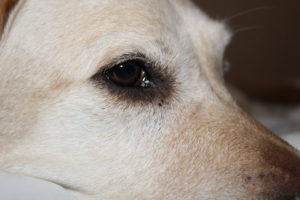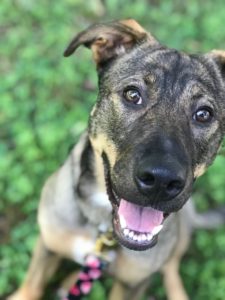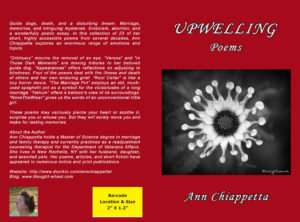This is a post written for, in part, the puppy raising and guide dog community. It explains what a real service dog is and how it develops. Indulge me for one more paragraph before we get to the subject line of the post. There is an ongoing issue here in the United States regarding people posing pets as emotional support or service animals to ride in airline cabins. It is called the ACAA, or the Airline Carrier Access Act. I am not going to explain the actual FAA and TSA notices and the rule making discussion, but I will say that a genuine, trained service dog will do it’s best to behave in places of public accommodation. For example, a hearing alert dog will sit quietly on its handler’s lap and not disrupt anyone’s experience. A PTSD service dog will lie quietly between its handler’s feet during a train ride. Any dog brought into the public that barks, lunges, urinates, is unkempt, is not under its handler’s control or is not tethered is not a real service dog and can be asked to leave. It’s all in how the dog and the handler behave and interact. I hope this helps folks understand what is at stake and the real service dog handlers are at risk of being negatively effected by those who break the law.
Okay, back to the original post.
Once a puppy reaches an appropriate age, usually around 18 months, the dog is returned for advanced training. By this time, the puppy raiser has imparted all the socialization, love, obedience, care and discipline to allow the dog to continue the rigorous and challenging harness training and hopefully exhibit the required qualifications to become a guide dog.
Yup, folks, it is canine college and the dog will graduate with an advanced degree in intelligent disobedience. What this means is a dog will disobey a command given by the blind handler if it is unsafe. Think of a car coming out of a driveway as the team is walking toward it. The dog will see the car pulling out and stop, then continue when it has judged it to be safe. If the handler tries to give the command to proceed before the dog judges it safe, the dog will ignore the command.
This is, of course, after months of formal harness training with a qualified GDMI – during which time the dog learns how to guide and learn other commands, like directions (left, right, forward) and targeting (to the door, steps, bus, elevator,) among others.
One time Bailey even stopped to show me a fiber optic wire hanging from the ceiling in the hallway leading to our office. Avoiding an overhead obstacle is the most difficult to teach a dog, I was impressed, for sure.
But, for the second time in this post, I digress.
Today we made the hour-long bus ride to visit Guiding Eyes For the Blind’s main campus and visit Bailey’s first Mom, Pat Bailey Webber. He just about lost his mind, spinning and doing some excited barking. He carried on, yodeling, rubbing, and licking Pat for at least ten minutes. This is the person who he bonded with, who saw him through all stages of puppyhood, some of it pretty gross and annoying, if I must say so. 😊
Witnessing the bond with Pat is just so special, so rewarding, I believe it makes my bond with Bailey even stronger. While he loves Pat and would go with her, he also willingly comes to me and does his job. He switches his attention, applies his training, and has the adaptability to get it done.
I have written before about the Spirit of Dog, what it means contextually; this is an example. The Spirit of Dog is loyal, adaptable, and talented. How could a person not admire these qualities in an animal? How could I deny Bailey the pleasure of visiting with his first family? I am honored and humbled after these visits. I am a recipient of a very special gift; it is the spirit of dog that brings people together.



